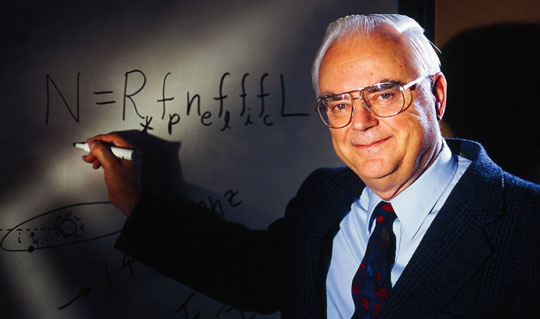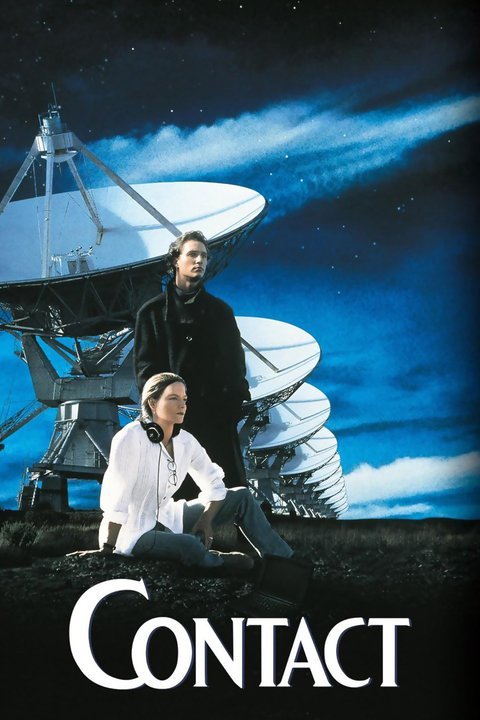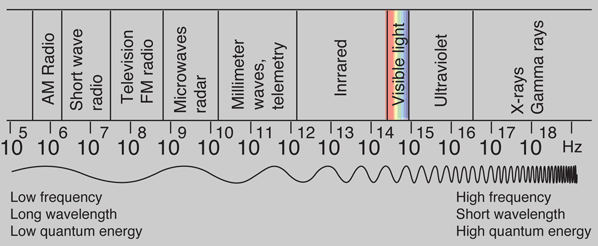“In the deepest sense the search for extraterrestrial intelligence is a search for ourselves.” Carl Sagan
That’s what it really comes down to. We want to know more about ourselves. What is our place in the Cosmos? What is our place in the Cosmic perspective of life? Finding extra terrestrial life would have profound implications on how we see the world. It would challenge everything we think we know about what it means to be human, intelligent, and alive. As long as we have been alive we have had these questions. This is what drives our search for extra terrestrial intelligence (SETI), but it wasn’t until recently that we have been able to begin the search.
You may or may not have noticed that I quoted Symphony of Science which I do every chance I get. So just for fun, here is a music video all about Our Place in the Cosmos.
A Brief History of the SETI Institute
The search for extraterrestrial intelligence (SETI) began right at the start of the Space Age when humans were just starting to explore to space. Two scientists, Phillip Morrison and Giuseppe Cocconi, published a paper where they explained how radio waves would well as a way to communicate between different stars. Once we made that realization, we were able to figure out that if there is intelligent, and specifically communicative, then it is very likely that they’d transmit and receive via radio telescopes. To be communicative means they would have developed the technology necessary to transmit these signals. The benefit of radio waves, and microwaves, is that you don’t see it very commonly in space. That means you wouldn’t have to be competing with every other source emitting electromagnetic waves (light).

In 1960, a young radio astronomer by the name of Frank Drake took it upon himself to test this theory. You may know Frank Drake for the infamous “Drake Equation,” but that’s a topic for another post. Drake went to the National Astronomy Observatory and fixed there nearly 30 meter radio telescope to two “nearby” stars (closest star to earth is about 4 light years). He listened for weeks. Alas, he was not successful. This was known as Project Ozma. It was the first modern SETI search, and many individuals have contributed since then.
The SETI Institute was organized in 1984 for the express purpose of furthering this research. However, it wasn’t until 1988 that NASA began considering taking up the task. NASA began the first observations in 1992. It was soon canceled by Congress only a year later. Thankfully, the received private funding to continue, at least in part, the NASA SETI Program. Ever since, they’ve continued the research Drake helped start.
Searching for life
The SETI institute is searching for life, but how? How do you possibly approach such a gargantuan problem? There are at least 100 billion stars in our galaxy and roughly 200 billion galaxies in the universe. So where do you possibly begin? Well that’s a question of habitability. We understand what life as we know it needs to survive. Using this, we can search for places that have similar characteristics. For example, rocky worlds (not gas giants), water signatures, planet not too far or close to the star to be warm enough for liquid water without boiling it all away, signatures that may be sign of life (e.g. oxygen) and so on and so fourth. There is a lot more that can be said about this, and I may elaborate in a later post. But these are the things they look for.
How do you know it’s intelligent?
They look, they hear, and then what? How do you differentiate between white noise, signals from regular space objects, and aliens? Below is a clip from the film Contact (1997), based on the book by Carl Sagan. Obviously, I don’t own it and it’s Warner Bros. property.

In this clip, Jodie Foster plays a women who grew up looking at the stars and wondering about the very questions presented above. Now she sits at the Very Large Array (see above pic) listening to incoming radio signals as the dishes scan the sky in hopes of hearing something intelligent. Obviously, she does. While watching, think about what it is that gets her attention and then what she does once she hears it.
It starts all she hears is fuzz from the white noise. Then the signal slowly starts to come into focus. It’s clearly more than white noise. It’s distinct. It’s repetitive. And eventually she realizes it’s a pattern of prime numbers. The pattern is important for obvious reasons, but hold that thought.
Notice once she hears it, she gets her teams attention. She has them verify the equipment is working properly. Once they do that they locate the system. They think of all the reasons why it wouldn’t make sense. The system is too young for life to have evolved. There is a lot of space debris making it unlikely they could survive long enough without being clobbered.
It’s important in these sorts of situations to be skeptical, no matter how much you want to believe it. You have to ask, what are all the ways this should and/or could be wrong. Finally, she contacts another scientists in a different location and from a different team. The point was to have someone else observe it and independently come to the same results (location, pattern, frequency, etc.).
When the signal stops, she panics, devastated? Why? She’s located it, shes did the systems check, and it’s clearly more than white noise. Why isn’t that enough? Several reasons. You want as much data as possible. The more you have the more opportunities you have to study the signal and to understand it. Plus, she didn’t have proof that it wasn’t something natural. The prime numbers was the smoking gun. think of it like a long pulse (−) then a silent moment (•) then more pulses as shown below.The key is that this repetitive signal has a clear pattern unlike anything we see in nature.

The other thing that caught her eye was the Hydrogen times pi. You have to wonder what the big deal was. To really understand why it’ so important requires a little back knowledge.
Hydrogen times π refers to the frequency of the signal. Specifically, it is π×1420.40575177 MHz=4.46233627 GHz
Pi is pi. We all know that it is 3.14 and so on. The hydrogen refers to something known as the Hydrogen 21cm line. To keep it simple, when hydrogen changes energy state (i.e. changes spin) it releases energy in the form of a photon (light).

All light has it’s own frequency where frequency is the number of cycles per second, or you can think of it as the ups and downs you see in the picture below, per second. Higher energy means higher frequency, more ups and downs. The trick is finding the right one to communicate on. We have all these we could send. We already said radio waves are the best to use, but that spans wavelengths in the millions to billions of Hz (1/seconds). We have to figure out what frequency an intelligent species would likely use.

So why not just use 1GHz? Or 1GHz times pi? 3.14 GHz is pretty specific. The problem is that is dependent on our measure for time. Rather than trying to explain it, I’ll let Dr. SETI do it.
Hertz means cycles per second, and the second is an arbitrary Earth unit for reckoning time. If another civilization has a basic time unit which differs from ours by only one part in a million, and sends on pi GHz (using their concept of a “second”), we’ll be fully a kiloHertz off (and thus probably never hear it) if we try listening on pi of our kinds of GHz
We have to find a way to avoid the bias of using the Earth time measurements and make it something anyone could find. The Hydrogen lines are useful because no matter where you are in the universe, the same thing will be observed. The reason we use it as opposed to another element that will have it’s own properties is because hydrogen is the base element. It is universal and the foundation to all elements. Doing that we can observe a distinct frequency that another intelligent species would logically think to use.
It’s obviously not a simple problem. The universe is so big that even if there is life, intelligent communicative life, we may never actually contact them. Yet we continue looking because that is how you solve hard problems. You take it one step at a time. Is there life? We don’t know, but we have an inkling. Keep an eye out for my next post where I’ll delve into that question a bit deeper when we explore the Drake Equation.
And remember…


